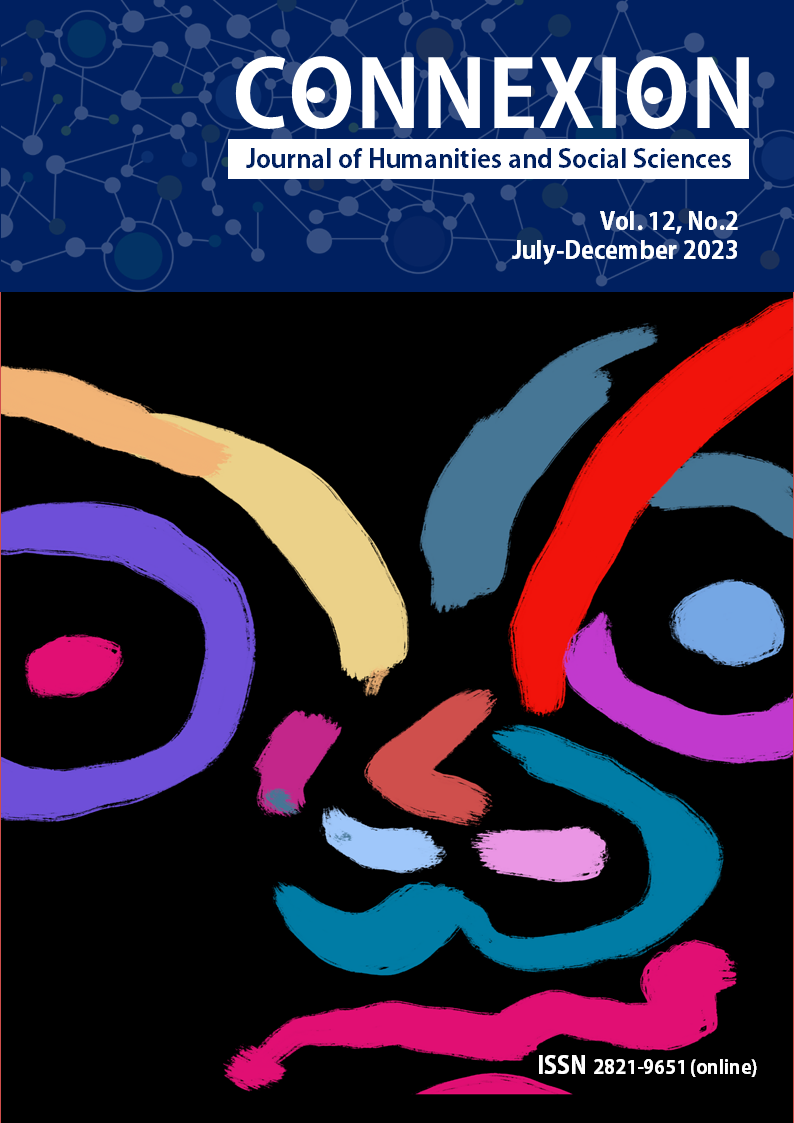The Role and Transformation of Nora Performing Art as Recognized by UNESCO as an Intangible Cultural Heritage
Main Article Content
Abstract
Nora is a valuable indigenous cultural heritage associated with the way of life of southern people for many generations. It represents a perfect combination between “science” and “arts”. Nora embeds a science of performing arts related to faith, religious rituals, superstition, spirits, deities and deceased ancestors. On the Nora is art in it aesthetic, delicate and strong moves to the rhythm of the unique music. There are exquisitely beautiful costumes and the style of the show is unique and unique. This enables Nora to live in a society that is dynamic or a society that is constantly changing. Nora has been declared Intangible Heritage of wisdom by the United Nations Educational, Scientific and Cultural Organization (UNESCO) in 2021 under the name “Nora, Dance Drama in Southern Thailand”.
The article on the role and transformation of Nora performing art as recognized by UNESCO as an intangible cultural heritage is an academic article that aims to analyze the role and transformation of Nora performing art as recognized by UNESCO as an intangible cultural heritage. It consists of the following topics: (1) The role and background of Nora performance that appears in literature, (2) Nora performance as an intangible cultural heritage, (3) Nora performance as an art of cultural heritage, (4) The role of Nora performance in today’s society, (5) The evolution of Nora’s performance over time, (6) Factors or conditions that cause Nora performance to be recognized as a world intangible cultural heritage. The analysis results found that in an era where the world is facing rapid change, Nora still prevails an important southern Thai culture rooted in the local area of the south. It is one of the cultures of mankind and progressing in parallel with the changes. However, Nora still plays the same role in creating entertainment, beliefs, rituals, reflecting the progress of society. Including the transfer of knowledge, ideas, beliefs, faith from one generation to the next.
Article Details

This work is licensed under a Creative Commons Attribution-NonCommercial-NoDerivatives 4.0 International License.
Copyright
Connexion: Journal of Humanities and Social Sciences has an exclusive right to publish the accepted articles in any form. However, the author retains the following rights:
1. The right to the ownership of the article;
2. The right to use all or part of the article in his/her other works;
3. The right to re-produce the article for personal use or for use in the author’s organisation, in which case the author must obtain permission from Connexion: Journal of Humanities and Social Sciences;
4. The right to make copies of all or part of the work for educational use or for the author’s use in classroom teaching; and
5. The right to include the work (both the preprinted and printed versions) in an institutional repository.
References
Burarat, P. (2010) Tragedy of the Songkhla Lake Basin changes and their relationship with society and the culture of Nang Talung and Nora (นาฏกรรมแห่งลุ่มทะเลสาบสงขลา การเปลี่ยนแปลงและความสัมพันธ์กับสังคมและวัฒนธรรมของหนังตะลุงและโนรา), Bangkok: Thailand Research Fund. (in Thai)
Burarat, P. (2013) Nora: Institute for Southern Thai studies edition (โนรา ฉบับสถาบันทักษิณคดีศึกษา), Bangkok: Department of Cultural Promotion. (in Thai)
Department of Cultural Promotion. (2016) Act Promotion and Preservation of Intangible Cultural Heritage 2016 and the Convention for the Safeguarding of the Intangible Cultural Heritage, 2003 (พระราชบัญญัติ ส่งเสริมและรักษามรดกภูมิปัญญาทางวัฒนธรรม พ.ศ. 2559 และอนุสัญญาว่าด้วยการสงวนรักษามรดกวัฒนธรรมที่จับต้องไม่ได้ ค.ศ. 2003), Available: http://book.culture.go.th/newbook/ich/ich2559.pdf [7 January 2023] (in Thai)
Kaewthep, K., & Hinviman, S. (2010) Stream of theoretical thinkers political economy. With educational materials (สายธารแห่งนักคิดทฤษฎีเศรษฐศาสตร์การเมืองกับสื่อสารศึกษา), Bangkok: Parbpim. (in Thai)
Laosuk, K. (2008) The study of music accompanying Nora performance and related culture: A case study of “Manorah Sprang Sawisin” group (เพลงประกอบการแสดงโนราและวัฒนธรรมที่เกี่ยวข้อง: กรณีศึกษามโนราห์คณะสพรั่ง สวีศิลป์), Master’s thesis of Fine Arts Ethnomusicology, Srinakarinwirot University. (in Thai)
Nakhvirote, S. (1995) Nora Department of Thai Language (โนราภาควิชาภาษาไทย), Songkhla: Faculty of Humanities and Social Sciences College Songkhla Teacher. (in Thai)
Narksen, S. (2020) Nora thakru (โนราท่าครู), Bangkok: Klang Wittaya Publishing House. (in Thai)
Nartsupa, C. (2010) Being modern with community concepts (การเป็นสมัยใหม่กับแนวคิดชุมชน), Bangkok: Sangsanbooks. (in Thai)
Petkaew, C. (2016) Nora: Conservation and development (โนรา: การอนุรักษ์และพัฒนา), Asian Journal of Arts and Culture, vol. 16, no. 1, pp. 1-27. (in Thai)
Prince Damrong Rajanubhab. (1965) Drama legend Adonis (ตำนานละครอิเหนา), Bangkok: Klang Wittaya Publishing House. (in Thai)
Samansuk, P., & Andhivarothai, P. (2016) Nora Value (คุณค่าโนรา), An Online Journal of Education, vol. 11, no. 3, pp. 407-421. (in Thai)
The Royal Institute Dictionary. (2006) Sociology English-Thai dictionary, Royal Institute edition (พจนานุกรมศัพท์สังคมวิทยา อังกฤษ-ไทย ฉบับราชบัณฑิตสถาน), Bangkok: The Royal Institute Dictionary. (in Thai)
Tramote, M. (1997) Folk games of Thailand (การละเล่นพื้นบ้าน), Bangkok: Matichon. (in Thai)
UNESCO Intangible Cultural Heritage. (n.d.) What is intangible cultural heritage?, Available: https://ich.unesco.org/en/what-is-intangible-heritage-00003 [10 January 2023]
Waiyawek, P. (2023) Development of the online Nora Dance Training Curriculum, Parichart Journal, Thaksin University, vol. 36, no. 1, pp. 198-212. https://doi.org/10.55164/pactj.v36i1.259317
Waiyawek, P., & Tongkam, W. (2021) Development of Nora dance curriculum for the youth, Asia Social Issues, vol. 14, no. 4, pp. 1-16.
Wheatley, P. (1961) The Golden Khersonese, Kuala Lampur: University of Malaya Press.


